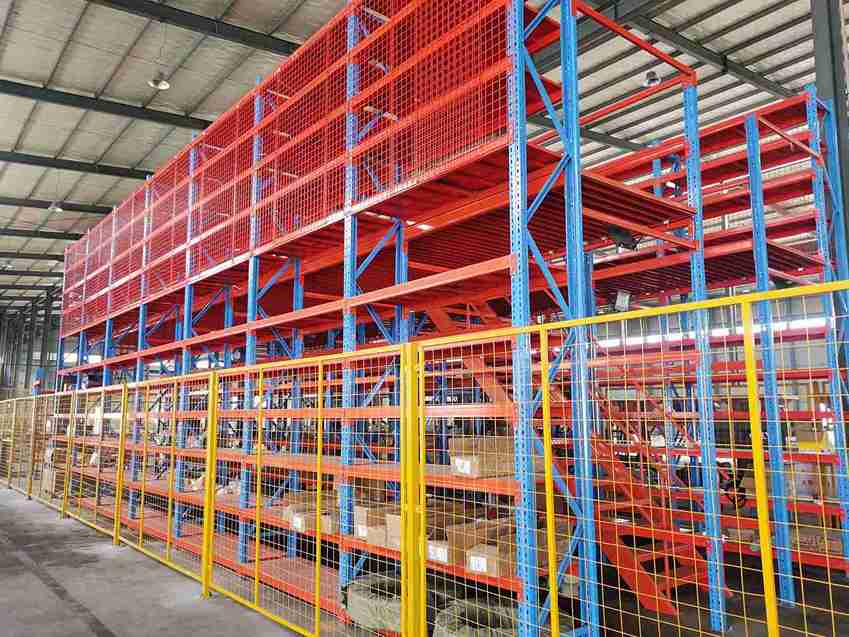📐 "First 50 Enterprise Queries Get Custom 3D Warehouse Design" Plan

Introduction: Why the Industrial vs Manual Racking Cost Debate Matters
Every warehouse manager in 2025 faces a critical decision: Should they invest in industrial racking systems or stick with manual racking solutions? The industrial vs manual racking cost debate isn’t just about upfront pricing—it’s about long-term efficiency, labor savings, and scalability.
With automation reshaping logistics, businesses must weigh:
-
Immediate costs of industrial racking vs. manual racking
-
Hidden expenses (maintenance, labor, energy)
-
Which system delivers better ROI for different warehouse sizes
-
Future-proofing strategies as e-commerce demands grow
This data-driven industrial vs manual racking cost analysis provides the clarity needed to make the best investment.

1. Breaking Down Industrial vs Manual Racking Systems
1.1 What Defines Industrial Racking in 2025?
When discussing industrial vs manual racking cost, it’s essential to understand what industrial racking entails:
-
Fully automated storage and retrieval systems (AS/RS)
-
AI-powered vertical lift modules (VLMs)
-
Robotic pallet shuttles
-
Conveyor-integrated smart racking
These systems minimize human intervention, maximizing speed and accuracy.
1.2 The Role of Manual Racking in Modern Warehouses
On the other side of the industrial vs manual racking cost debate, manual racking remains popular for its simplicity:
-
Selective pallet racking (most common)
-
Push-back and drive-in racks
-
Cantilever racks for bulky items
-
Mobile shelving units
While cheaper upfront, manual racking requires more labor, impacting long-term costs.
2. Upfront Costs: Industrial vs Manual Racking in 2025
2.1 Industrial Racking: Higher Initial Investment, Long-Term Gains
The industrial vs manual racking cost comparison starts with upfront pricing:
-
Robotic AS/RS systems: $200,000 – $2M+
-
Automated conveyor systems: $100,000 – $500,000
-
AI software integration: $30,000 – $150,000
Why the high cost? Industrial racking relies on cutting-edge automation, which demands precision engineering.
2.2 Manual Racking: Lower Entry Price, Higher Labor Dependence
For businesses prioritizing short-term budget constraints, manual racking offers:
-
Selective pallet racks: $1,500 – $15,000 per bay
-
Shelving units: $5 – $100 per sq. ft.
-
Minimal installation costs
However, labor inefficiencies quickly add up, making industrial racking more cost-effective for high-volume operations.
3. Labor Costs: The Hidden Factor in Industrial vs Manual Racking Cost
3.1 How Industrial Racking Slashes Labor Expenses
A major advantage in the industrial vs manual racking cost debate is reduced workforce dependency:
-
Automated picking reduces staffing needs by 40-80%
-
AI-driven sorting eliminates human errors (saving $50K+ annually)
-
24/7 operation without overtime costs
3.2 The True Cost of Manual Racking Labor
Manual systems require:
-
More workers ($35,000 – $70,000 per employee/year)
-
Slower order processing (impacting customer satisfaction)
-
Higher injury risks (increasing insurance costs)
For high-throughput warehouses, industrial racking’s labor savings quickly justify its higher initial price.
4. Maintenance & Operational Expenses: Industrial vs Manual Racking Cost Over Time
4.1 Industrial Racking Maintenance: Tech-Driven but Costly
-
Predictive maintenance software reduces downtime
-
Annual software updates: $5,000 – $30,000
-
Robotic part replacements: $10,000 – $50,000
4.2 Manual Racking Maintenance: Simpler but More Frequent
-
Structural repairs: $1,000 – $10,000/year
-
No software costs
-
Faster wear-and-tear on forklifts and shelving
Which is cheaper long-term? It depends on warehouse size and throughput.
5. Scalability: Future-Proofing Your Racking Investment
5.1 Industrial Racking: Built for Growth
-
Modular expansions (add more robots as needed)
-
AI optimizes space dynamically
-
Best for fast-growing e-commerce businesses
5.2 Manual Racking: Limited by Physical Space
-
Easy to add more shelves
-
Labor costs rise with expansion
-
Inefficient for high-SKU operations
For scalability, industrial racking often wins in the industrial vs manual racking cost debate.
6. ROI Analysis: Which System Pays Off Faster?
6.1 Industrial Racking ROI (3-7 Years)
-
Best for warehouses with 10,000+ daily orders
-
Labor savings offset high initial costs
6.2 Manual Racking ROI (1-3 Years)
-
Ideal for small businesses with <100 daily orders
-
Lower upfront cost but higher long-term labor expenses
Key takeaway: High-volume operations should prioritize industrial racking, while smaller warehouses benefit from manual racking’s affordability.
7. Future Trends Impacting Industrial vs Manual Racking Cost in 2025
7.1 Why Automation is the Future
-
AI and machine learning optimize storage
-
Labor shortages drive automation adoption
-
E-commerce demands faster fulfillment
7.2 When Manual Racking Still Makes Sense
-
Seasonal businesses
-
Low-budget startups
-
Warehouses with simple storage needs
8. Real-World Case Studies: Industrial vs Manual Racking Cost in Action
8.1 Amazon’s Automated Warehouses
-
Saved $22M/year in labor
-
20% faster order processing
8.2 Midwest Distributors: Manual Racking Success
-
$50,000 initial savings
-
Struggled with labor shortages as they grew
9. How to Choose: Industrial vs Manual Racking Cost Decision Guide
9.1 Key Questions to Ask
-
What’s your order volume?
-
What’s your 5-year growth plan?
-
Can you afford automation’s upfront cost?
9.2 Hybrid Solutions: The Middle Ground?
-
Semi-automated picking systems
-
Manual storage with robotic retrieval
10. Final Verdict: Industrial vs Manual Racking Cost in 2025
The industrial vs manual racking cost decision hinges on:
✅ Budget – Can you afford automation?
✅ Order volume – High throughput favors industrial.
✅ Future growth – Scalability is key.
For large warehouses, industrial racking delivers superior ROI. For smaller operations, manual racking remains cost-effective.
FAQs: Industrial vs Manual Racking Cost Explained
1. Does industrial racking require specialized staff?
Yes, but most vendors provide training programs.
2. Can manual racking be upgraded to automation later?
Some systems allow partial automation, but full upgrades are costly.
3. What’s the lifespan comparison?
-
Industrial: 10-20 years (with updates)
-
Manual: 15-30 years (with maintenance)
4. How does energy use compare?
Industrial systems consume more power but save on labor.
5. Which is better for cold storage?
Automation reduces worker exposure, improving safety.




